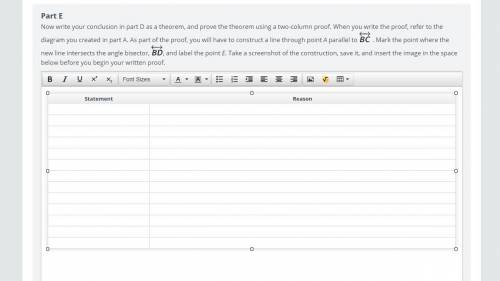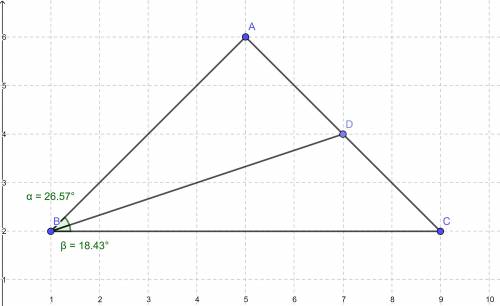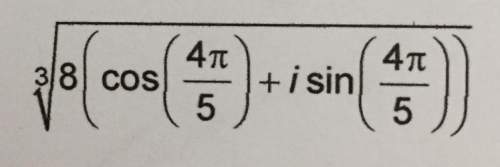
Mathematics, 28.07.2020 22:01, jiedwards2815
Now write your conclusion in part D as a theorem, and prove the theorem using a two-column proof. When you write the proof, refer to the diagram you created in part A. As part of the proof, you will have to construct a line through point A parallel to segment BC. Mark the point where the new line intersects the angle bisector, segment BD and label the point E. Take a screenshot of the construction, save it, and insert the image in the space below before you begin your written proof. The second image has the figure I constructed in part A:



Answers: 3
Other questions on the subject: Mathematics

Mathematics, 21.06.2019 15:00, erykp17
Which statement is true? the given sides and angles cannot be used to show similarity by either the sss or sas similarity theorems. the given sides and angles can be used to show similarity by the sss similarity theorem only. the given sides and angles can be used to show similarity by the sas similarity theorem only. the given sides and angles can be used to show similarity by both the sss and sas similarity theorems.
Answers: 1

Mathematics, 21.06.2019 19:20, maisieisdabomb23
What is the measure of ac? 5 units 13 units 26 units 39 units 3x- 2b 6x + 9
Answers: 2

Mathematics, 21.06.2019 20:30, icantspeakengles
In priyas math class there are 10 boys and 15 girls. what is the ratio of boys to girls in priyas math class? express your answer as a decimal
Answers: 1
Do you know the correct answer?
Now write your conclusion in part D as a theorem, and prove the theorem using a two-column proof. Wh...
Questions in other subjects:








SAT, 02.02.2022 22:30








